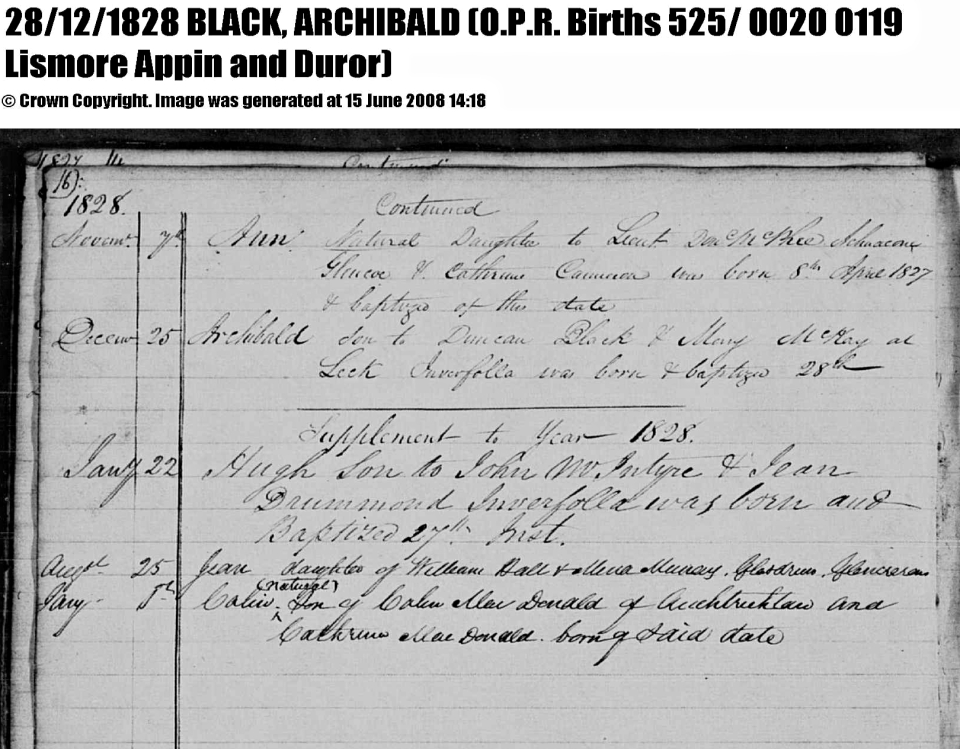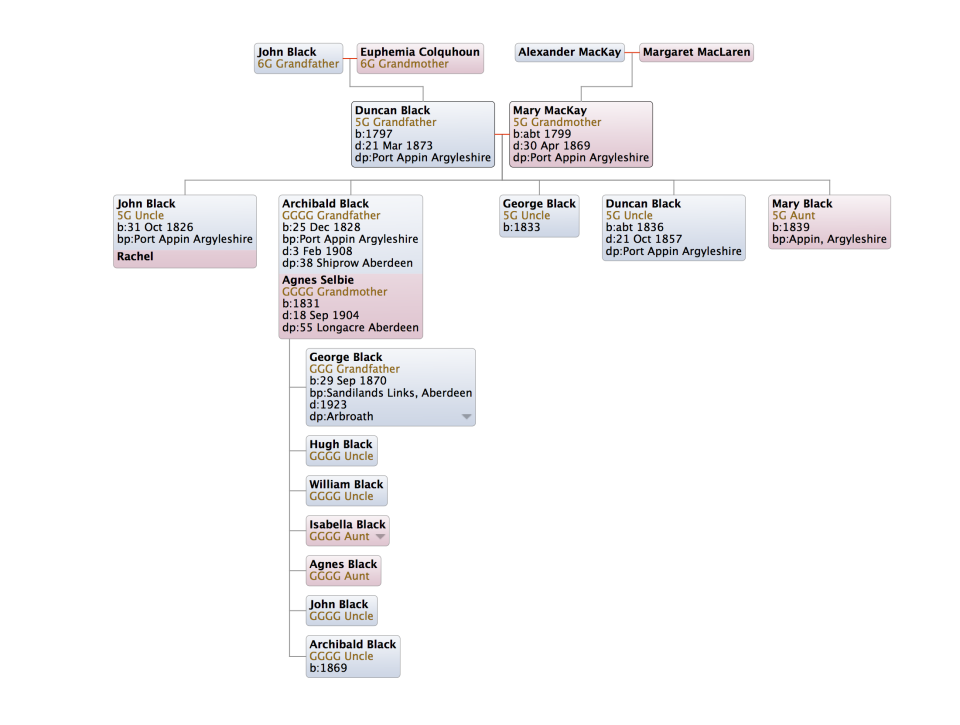Having published the previous post, I started to wonder what happened to Duncan and Mary Black’s other children, besides Archibald. I went back to the records in Scotlands People to try to discover more.
The informant for Duncan’s death registration was his eldest son John. John married Rachel / Rachael Crichton (or Crighton) who came from Stornoway on the Isle of Lewis. They appear not to have had any children, but were living with Duncan at Port Appin Crofts at the time of the 1871 census, two years after Mary Black (nee MacKay) had died. After Duncan died in 1873, they continued to live at Port Appin, with John working as a crofter and labourer until the 1901 census when his occupation is listed as ‘estate carter’, and in the 1911 census he is a retired carter. Rachael died in 1901 and when John passed away in 1914, the informant for his death registration was his neighbour, Alexander Matheson. There appear to have been no close Black relatives living locally.
The second son Archibald, LIam’s 4 x g grandfather, moved to Aberdeen as a young man – his story will be in a later post. But of note in relation to Archibald, his birth registration in 1828 indicates that the family was then living at “Loch(?) Inverfolla”. Inverfolla is a village three miles east of Port Appin, close to Loch Creran, so I assume that this is what is meant by this location.
The two youngest children, Duncan and Mary, both died as young adults of consumption (tuberculosis). Duncan was aged 24 and had consumption “of one year’s duration”; Mary also had the disease for one year; she had worked as a housemaid at the age of 14 and was 19 when she died. Duncan had been employed on his father’s farm as a labourer. Both were single. Both were buried in the churchyard at Appin.
George Black, the third son, was born about 1832 but to date I have been unable to trace him beyond his listing as an 8 year old in the 1841 census, living with the family at Port Appin. He is not living with the family at the 1851 census, and being a common name, there are a multitude of George Blacks elsewhere in Scotland at that time, but the census indexes provide no information which can specifically identify a George Black born at Port Appin, Argyll (that is, without purchasing all the records to find out!). I have also been unable to locate a death record for him.
So at this stage it appears that the only one of Duncan and Mary’s children to continue the Black family into a further generation was Archibald.
The loss of two children to tuberculosis was probably not unusual. According to Wikipedia: “Tuberculosis caused the most widespread public concern in the 19th and early 20th centuries as an endemic disease of the urban poor. In 1815, one in four deaths in England was due to ‘consumption’.” TB was not determined to be contagious until the 1880s, and it was not until 1946, that “the development of the antibiotic streptomycin made effective treatment and cure of TB a reality”.




